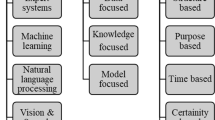Abstract
This paper demonstrates a new interpretation of the material purchasing management system (MPMS) from the perspective of complex adaptive systems (CAS). Within the framework of CAS, the authors design the self-adaptive mechanism of the MPMS responding to the changing environment, such as the change of the price, by using risk measurement theory, modern portfolio theory (MPT) and the information of the material’s modifying priority. As a bottom-up systems view, CAS focuses on the individual level and studies system’s overall complexity by analyzing the mutual competition and adaptation among the individuals. This paper demonstrates a quantitative description of CAS by discussing theMPMS which can be viewed as a kind of CAS, and makes numerical simulations of Daqing oilfield MPMS. Compared to the benchmarks, the authors set the simulations show that the self-adaptive mechanism adapts well to the change of the material’s market price. Hence, this paper accomplishes a numerical simulation of CAS’s quantitative self-adaptive mechanism responding to the environment’s change.
Similar content being viewed by others
References
Holland J H, Hidden Order: How Adaptation Builds Complexity, Addison-Wesley, Massachusetts, USA, 1995.
Lukszo Z V and Bouwmans I, Intelligent complexity in networked infrastructures, Systems, Man and Cybemetics, 2005, 3(3): 2378–2383.
Amin A and Ballard D, Defining new markets for intelligent agents, IT Professional, 2000, 2(4): 29–35.
Fleming L and Sorenson O, Technology as a complex adaptive system: Evidence from patent data, Research Policy, 2001, 30(7): 1019–1039.
Mangel M, Complex adaptive systems, aging and longevity, Journal of Theoretical Biology, 2001, 213(4): 559–571.
Schwab E D and Pienta K J, Modeling signal transduction in normal and cancer cells using complex adaptive systems, Medical Hypotheses, 1997, 48(2): 111–123.
Tesfatsion L, Agent-based computational economics: Modeling economies as complex adaptive systems, Information Sciences, 2003, 149(4): 262–268.
Paul S, Twala B, and Marwala T, Organizational adaptation to complexity: A study of the south African insurance market as a complex adaptive system through statistical risk analysis, Systems Engineering Procedia, 2012, 4: 1–8.
Pathak S D and Dilts D M, Simulation of supply chain networks using complex adaptive system theory, Engineering Management Conference, 2002, 2(2): 655–660.
Chen L F, Shi A N, and Xia J W, Application in management of complex adaptive system, Science and Technology Management Research, 2007, 8: 40–42.
Steels L, Language as a complex adaptive system, Parallel Problem solving from Nature PPSN VI, vol. 1917 of Lecture Notes in Computer Science, Springer Berlin Heidelberg, 2000, 17–26.
Chen Y, Complex adaptive system theory and its application: Foundation, contents and implication, Journal of Systemic Dialetics, 2001, 9(4): 35–39.
Zhang Y A and Li C G, Outlook for the researches of complex adaptive system’s application domain, Management Review, 2010, 22(5): 121–128.
Sancores C and Pavon J, Agent based simulation for social systems: From modeling to implementation, Current Topics in Artificial Intelligence, 2006, 4117: 79–88.
Jiang T, Jia X Y, Zhang M, and Cui J C, A CVaR-based method for material purchasing revision, 2012 International Conference Systems and Informatics (ICSAI), Yantai, 2012, 1253–1257.
Markowitz H, Portfolio selection, The Journal of Finance, 1952, 7(1): 77–91.
Markowitz H, Porfolio Selection: Efficient Diversification of Investments, John Wiley & Sons, New York, 1959.
Markowitz H, The utility of wealth, Journal of Political Economy, 1952, 60(2): 151–158.
Samuelson P A, Foundations of Economic Analysis, Havard University Press, Massachusetts, 1955.
Huang C and Litzenberger R H, Foundations for Financial Economics, Prentice-Hall, New Jersey, 1988.
Bodie Z, Kane A, and Marcus A J, Investments, 8th Edition, McGraw-Hill/Irwin, New York, 2009.
Gaivoronski A A and Pflug G, Finding optimal portfolios with constraints on value at risk, Proceedings III Stockholm Seminar on Risk Behavior and Risk Management, 1999.
Benati S, The optimal portfolio problem with coherent risk measure constraints, European Journal of Operational Research, 2003, 150(3): 572–584.
Campbell R, Huisman R, and Koedijk K, Optimal porfolio selection in a value-at-risk framework, Journal of Banking & Finance, 2001, 25(9): 1789–2056.
Quaranta A G and Zaffaroni A, Robust optimization of conditional value at risk and porfolio selection, Journal of Banking & Finance, 2008, 32(10): 2046–2056.
Yin G and Jin H Q, Numerical methods for portfolio selection with bounded constraints, Journal of computational and Applied Mathematics, 2009, 232(2): 564–581.
Golmakani H R and Fazel M, Constrained porfolio selection using particle swarm optimization, Exper Systems with Applications, 2011, 38(7): 8327–8335.
Xu F S, Chen W, and Yang L, Improved particle swarm optimization for realistic porfolio selection, Eighth ACIS International Conference on Software Engineering, Artificial Intelligence, Networking, and Parallel/Distributed Computing, 2007, 1: 185–190.
Schaerf A, Local search techniques for constrained portfolio selection problems, Computational Economics, 2002, 20: 277–290.
Chang T J, Meade N, and Beasley J E, Heuristics for cardinality constrained portfolio optimization, Computers & Operations Research, 2000, 27(13): 1271–1302.
Wang C B and Liu R Y, Study on market price of oilfield class — A materials forcasting based on ARIMA model, Operations Research and Management Science, 2013, 5: 160–165.
Qu L G and Liu R Y, A dynamic short-term price forecasting framework for oilfield materials, 2012 International Conference on Systems and Informatics (ICSAI), 2012, 1: 1258–1264.
Author information
Authors and Affiliations
Corresponding author
Additional information
This research is supported by Key laboratory of Management, Decision and Information Systems, Chinese Academy of Science.
This paper was recommended for publication by Editor FANG Yong.
Rights and permissions
About this article
Cite this article
Zhang, M., Cui, J. A quantitative description of complex adaptive system: The self-adaptive mechanism of the material purchasing management system towards the changing environment. J Syst Sci Complex 29, 151–170 (2016). https://doi.org/10.1007/s11424-015-3210-5
Received:
Revised:
Published:
Issue Date:
DOI: https://doi.org/10.1007/s11424-015-3210-5




